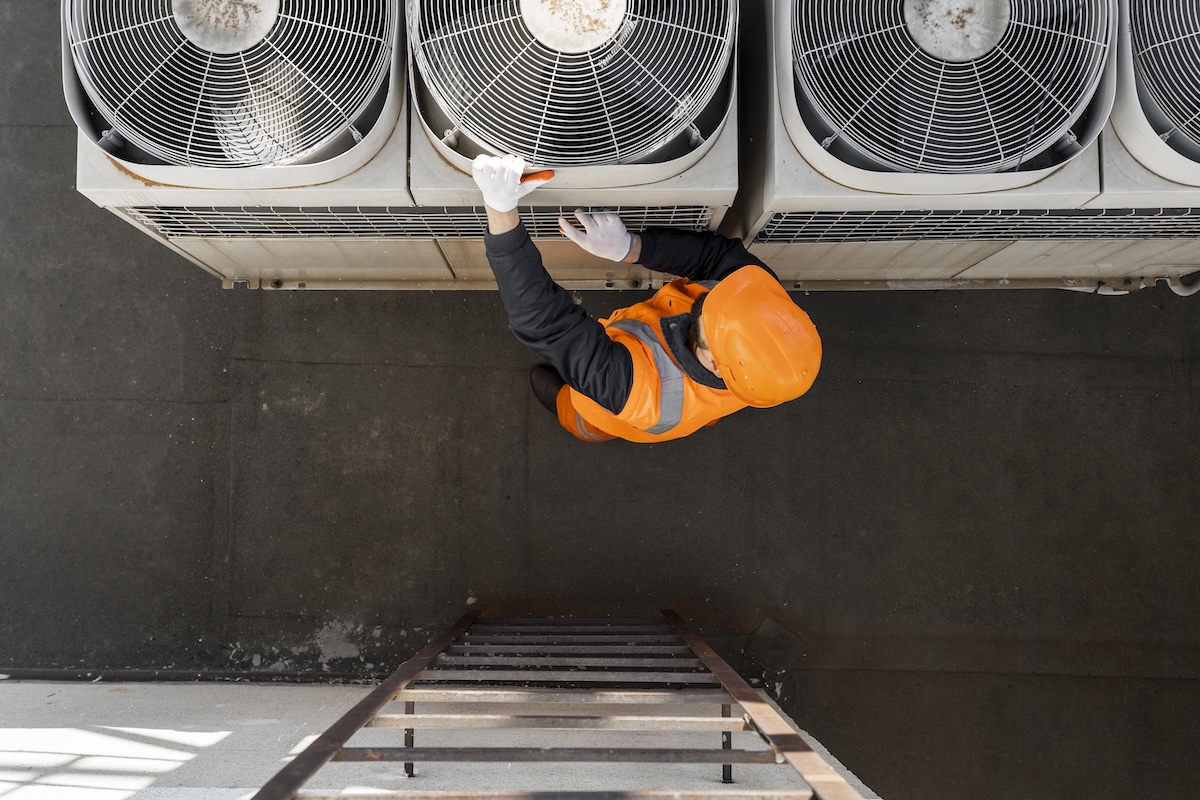As the year comes to a close, the plumbing industry is facing a unique set of challenges and opportunities. Unlike the HVAC residential market, plumbing is facing a more positive outlook. Although there is market turbulence, the core of the industry is showing a real, different kind of resilience.
In this blog, we’ll dive into the current plumbing industry trends. That way, you can position your business for profitable growth and long-term strength heading into 2026. Here’s what you need to know.
The Current State: Resiliency is the Guiding Principle
High interest rates have caused a slowdown in new residential housing. Yet, the demand for essential plumbing services remains strong. Two factors may be driving this demand: aging infrastructure and a steady surge in home remodeling. And we think those aren’t likely to change anytime soon.
So what does that mean for the plumbing industry? Although the economic conditions aren’t ideal, there’s still an opportunity to close out 2025 strong.
Trend 1: The “Lock-In Effect” Drives Repair and Remodel Demand
The high-interest-rate environment has created what many are calling the “Lock-In Effect.” Simply put, homeowners with low-rate mortgages aren’t moving. It doesn’t make financial sense for them to sell and take on a new, high-rate mortgage.
Instead of moving costs and higher rates, they’re focusing on improving the homes they already own. This is excellent news for the plumbing industry in terms of service, repair, and remodeling (R&R).
- Non-Discretionary Service Revenue: The US housing stock is aging rapidly. The median age of owner-occupied homes is now over four decades old. This creates a constant, non-discretionary need for essential plumbing updates. In turn, that drives steady service revenue for the plumbing industry.
- Essential Upgrades on the Rise: Homeowners are tackling significant R&R projects like whole-house repiping, efficiency upgrades, and replacing lead components.
- A New Growth Engine: This shift reinforces R&R as the primary growth engine for the plumbing sector. Companies heavily exposed to new residential construction are actually seeing revenue decline. This further highlights the strength of the R&R market.
Your strategy: Plumbing Maintenance Plans
You can address the shift from new equipment to repair and remodel by similarly shifting your focus to maintenance plans. Don’t worry. This doesn’t mean you should eliminate your new business—you should absolutely keep seeking out new leads.
Rather, plumbing maintenance plans ensure your customers’ equipment keeps running smoothly. It also helps creates recurring revenue for your business. As a result, this can create long-lasting customers for future larger jobs.
Trend 2: Innovation Shifts from Luxury to Necessity
Plumbing industry trends are no longer reserved for the highest-end, luxury homes. They’re quickly evolving from “nice-to-have” add-ons to essential parts of home maintenance. And those plumbing industry trends are focused on three consumer concerns: water efficiency, quality, and operational efficiency.
- Smart Water Systems: Demand for smart plumbing solutions is surging. Smart leak detectors that automatically shut off the water are a top priority to prevent costly water damage. Given that the average water damage claim exceeds $11,000, these systems can be an easy, practical sell.
- Water Quality and Sustainability: As concerns over municipal water quality mount, whole-house water filtration systems are a growing market segment. Furthermore, low-flow fixtures and other sustainable solutions continue to gain popularity, driven in part by compliance with stricter EPA regulations.
- Operational Efficiency in the Field: Innovative methods like trenchless technology (like CIPP, or Cured-in-Place Pipe, relining) are gaining traction. This faster, less invasive alternative to traditional methods is a key example of how technology is improving field operations.
Your strategy: Give Customers More Ways to Pay with Financing Options
When those larger jobs come in for repairs or remodels, the price tag can make many consumers take pause. Offering financing makes it easier for customers to pay for necessary repairs. It also creates opportunities for them to sign on to larger remodel jobs.
A solution like WEX Field Service Management (FSM) helps you build and manage maintenance plans. Automated appointment reminders ensure that regular appointments stay on the calendar. WEX FSM also has a large network of financing partners, giving customers flexibility in their financing options. That way, you can focus on quality service and closing deals.
Trend 3: External Pressures Constrain Supply Chain and Workforce
Despite the strong demand signals, it’s not all smooth sailing. External factors are squeezing margins and limiting the capacity to capitalize on the robust R&R market.
- Rising Material Costs from Tariffs: New tariffs could directly impact the cost of imported materials like copper fittings and brass valves. This creates “sticker shock” for homeowners and raises the cost of a new water heater. Margin compression adds extra pressure to either absorb these costs or pass them through to customers.
- The Skilled Labor Crisis: Perhaps one of the biggest bottlenecks is the skilled labor shortage. Aging workforces combined with projected job growth mean many companies simply cannot take on more work. Regardless if the demand is there. This capacity constraint is driving two major business responses:
- Consolidation: Private equity investment is increasing. Firms are acquiring smaller companies to build scale and secure access to a reliable, existing workforce.
- Tech Adoption: Companies are turning to scheduling and dispatching tools to maximize the efficiency and billable hours of their technicians.
Your strategy: Ensure Profitability with Flat Rate Pricing
Traditional time-and-materials pricing creates uncertainty for both you and your customers. News tariffs and technology innovation make adjusting your rates difficult. As a result, it makes it harder to price for profitability. With flat rate pricing, you present customers with a fixed price before work begins. That way, they know exactly what they’re paying.
What does that mean for you? It means you can build custom markups into all of your service offerings. When you automate it with a solution like WEX FSM, you get a command center for managing your entire flat rate pricebook. That lets you make strategic pricing decisions that immediately translate to every technician in the field.
Position Your Business for a Strong 2026 with Plumbing Business Software
The plumbing industry foundation is fundamentally healthy. The key to navigating the turbulence of tariffs and the labor crisis is to focus on operational efficiency.
This is where plumbing business software like WEX FSM comes in. It gives you the tools to turn these industry trends into profitable opportunities. Here’s how:
Maximize Capacity and Boost Cash Flow
With a limited workforce, the last thing you want is a technician sitting in traffic or spending precious minutes writing up a paper invoice. This is a common problem, and over time, it can negatively impact your revenue.
WEX FSM solves this challenge with intelligent scheduling and dispatching.
- Intelligent Scheduling: WEX FSM helps you route jobs based on a technician’s real-time location, skill set, and availability. This optimization means your techs can complete jobs more efficiently and ideally, get to more jobs in the day.
- Accelerate Payments: When a tech completes a high-ticket job—like a water heater upgrade or a whole-house repipe—you need to get paid fast. The WEX FSM mobile app allows your field team to collect payments and update work orders on-site. Mobile invoicing and integrated payment processing, in turn, accelerate your cash flow.
Build Recurring Revenue and High-Margin Sales
Remember that surge in smart water systems and whole-house filtration installations (Trend 2)? Your current customers are your best opportunity for upselling these high-margin items.
WEX FSM’s customer management tools help you track and capitalize on this trend.
- Targeted Upsells: You can track every customer’s service history and installed equipment. This means your technician knows the age and type of the water heater before they arrive. That makes it easy to propose a high-efficiency tankless upgrade or a new smart leak detection system.
- Stabilize Revenue: A one-time emergency call should never be a one-time transaction. WEX FSM allows you to set up automated follow-ups and service reminders. These are crucial for converting initial emergency calls into stable, recurring maintenance contracts.
By using a solution like WEX FSM, you can focus on targeting profitable opportunities. And that strategic business management is the foundation to dominate in 2026 and beyond.
Ready to see it for yourself? Schedule a personalized demo today!
CRM FAQs
We understand that choosing the right CRM solution can be daunting. Here are answers to some common questions about WEX FSM’s CRM software:
Our CRM is designed for seamless integration with a wide range of business tools, including accounting software, GPS tracking systems, and more. We offer API access and dedicated support to ensure a smooth transition.
Absolutely! WEX FSM’s mobile app gives technicians full access to customer information, job details, and inventory data all from their smartphone or tablet.
Our CRM includes robust inventory management features, allowing you to track parts across multiple locations, set reorder points, and even predict future inventory needs based on historical data.



